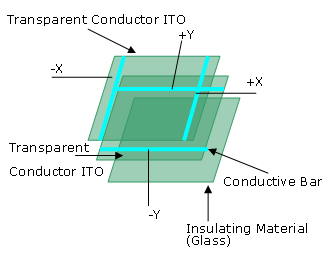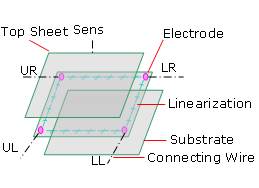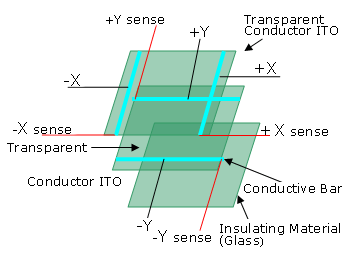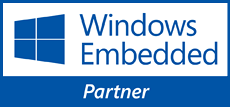Resistive technology is suitable for a variety of applications and environments. Resistive Touch Panel is based on two transparent resistive ITO layers (conductive and resistive layers) that are used as a sensor.
4-wire analog resistive touch panel
Resistive touch screens are generally built with two layers of electrically conductive materials (ITO Indium Tin Oxide or ATO Antimony Tin Oxide) separated by insulated dots. When an object touches the device, the two layers come into contact. The contact produces a change in electrical current and is registered as an analog touch event signal. The signal is then sent through the circuit to be converted into a digital signal by the controller for the device to compute the exact location of the touch event.
Benefits
- Low cost
- Broad input flexibility
- Dust-proof and liquid resistance
- High accuracy and durability
5-wire analog resistive touch panel
A 5-wire resistive touch screen has 4 linearization patterns and 4 electrodes (circular). The linearization pattern and electrodes reside in the same ITO layer. The 4-side of linearization pattern is called fifth wire.
Benefits
- High resolution and sensitivity
- Broad input flexibility
- Dust-proof and liquid resistance
- High accuracy and durability
- Long lifetime (almost ten times of 4-wire resistive panel)
8-wire analog resistive touch panel
Compare a 4-wire touch screen with a 8-wire touch screen. An 8-wire touch screen has more sense wires to the end of each conductive bar. These sense wires calibrate out any voltage offset by the wiring or drive circuitry.
Benefits
- High resolution and sensitivity
- Broad input flexibility
- Dust-proof and liquid resistance
- High accuracy and durability

